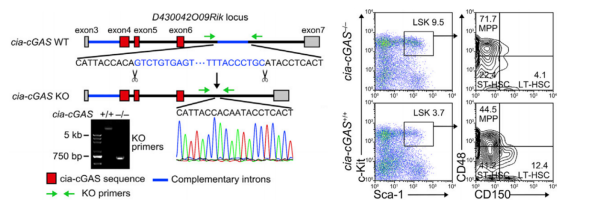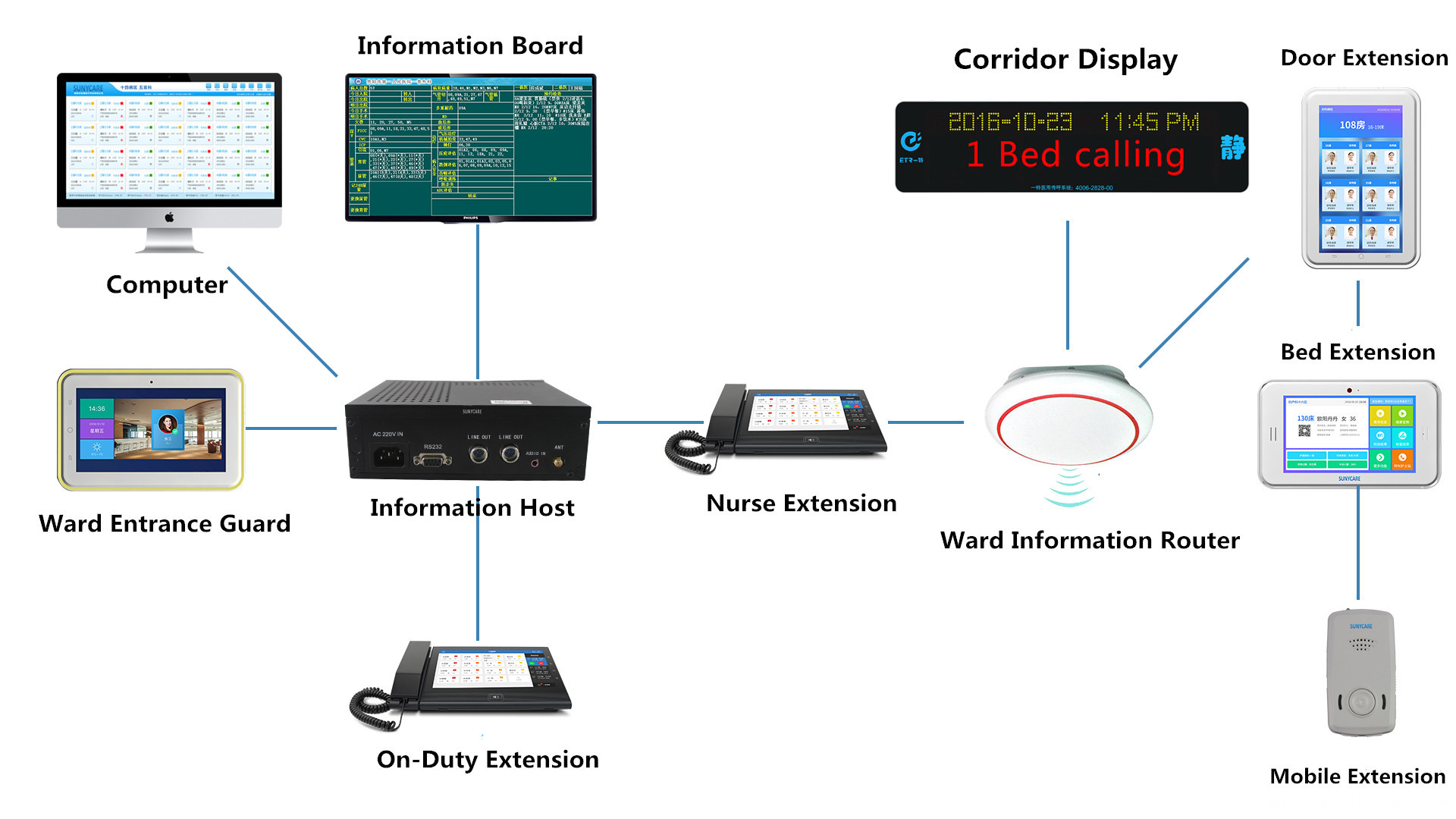Cyclic RNA is a star molecule that studies the continually hot, and unlike the rich expression profiling, the study of the functional mechanism of circular RNA is still in its infancy. Cyclic RNA research is mostly a miRNA sponge mechanism. Some circRNAs can competitively bind miRNAs, deactivate miRNAs against target genes, and up-regulate target gene expression. In fact, circular RNA can regulate the process of cell reproductive growth at the pre-, post- and post-transcription levels by combining different kinds of functional proteins. Cloud sequence has a detailed analysis of the classical research ideas of circular RNA (2018 national natural research hotspot - in-depth analysis of circular RNA research), interested teachers can query and browse. On April 3, Immunity (IF: 22.845), a well-known immunology journal, published an online article published by Prof. Fan Zusen and Wang Shuo, researchers from the Institute of Biophysics of the Chinese Academy of Sciences, and found that the circular RNA Cia-cGAS is located in the nucleus and can bind DNA. The sensitive cGAMP synthase cGAS inhibits its activity and regulates the resting state of long-acting hematopoietic stem cells (LT-HSC). This paper greatly expands the research ideas of nuclear RNA in the nuclear through the binding of kinases to play important physiological functions.

Research Background:
Breaking the balance between hematopoietic stem cell (HSC) self-renewal and differentiation will lead to bone marrow failure and malignant hematological tumorigenesis. However, how HSCs maintain their quiescence and avoid type I interferon (IFN)-mediated energy depletion and apoptosis is still unknown. Here is a circular RNA called cia-cGAS, which is highly expressed in the nucleus of long-acting (LT)-HSCs. Defects in mouse Cia-cGAS will result in high expression of type I IFN in the bone marrow with a significant reduction in the number of resting LT-HSCs. Under steady-state conditions, cia-cGAS blocks its synthase activity by binding to the DNA sensor cGAS in the nucleus, thereby protecting resting LT-HSC from cGAS-mediated depletion of apoptosis. Furthermore, cia-cGAS binds more strongly to cGAS than linear cGAS, thereby inhibiting cGAS-mediated production of type I IFN in LT-HSCs. This paper reveals that a novel circular RNA, cia-cGAS, binds to the DNA-sensitive cGAMP synthase cGAS and inhibits its activity, regulating the resting state of long-acting hematopoietic stem cells (LT-HSC).
Research ideas:
In this paper, we first compared the transcriptome changes in LT-HSC, ST-HSC and MPPs in mice based on high-throughput methods, and found 156 significant differentially expressed circRNAs. The expression level verification confirmed that 9 circRNAs were significantly up-regulated in LT-HSC. At the cellular phenotype, it was found that only the circRNA that interferes with D430042O09Rik transcription, Cia-cGAS, can significantly change the subpopulation distribution of hematopoietic stem cells. The authors therefore anchored Cia-cGAS for mechanism analysis. The authors successfully constructed Cia-cGAS knockout mice by Cas-9 gene knockout strategy. In Cia-cGAS knockout mice, LT-HSC was significantly decreased and type I IFN expression was increased. Through RNA Pull-down experiments, the authors found that Cia-cGAS can bind to cGAS, and the cGAS-RIP experiment reversely confirmed a direct interaction between the two. Subsequently, the authors analyzed the site information of Cia-cGAS interaction with cGAS by biofeed prediction combined with EMSA experiments. Enzymatic studies have shown that Cia-cGAS can bind to cGAS and inhibit its activity.
Study 1: Screening and verification of circular RNA molecules
To explore the circRNA molecules involved in hematopoietic stem cell function, the authors compared the changes in the whole transcriptome in different hematopoietic stem cells (LT-HSC, ST-HSC and MPPs) in mice, and identified 156 significant differentially expressed circRNA molecules. 49 species were highly expressed in LT-HSC. RNase R and qPCR experiments confirmed that 9 of them were highly expressed cyclic RNA molecules in real LT-HSC. In order to effectively screen the circRNA molecules related to hematopoietic stem cells, the authors found that the interference of Cia-cGAS can significantly affect the distribution of hematopoietic stem cell subsets in mice, and the number of LSK progenitor cells is significantly increased. The number of LT-HSC cells was significantly reduced. Therefore, the authors combined transcriptome data and in vivo and in vitro validation experiments to finally anchor the Cia-cGAS molecule for subsequent molecular mechanisms.

Study 2: Cytoskeleton of circular RNA molecules
The authors found that Cia-cGAS is joined by loops 4, 5, and 6 exons of D430042O09Rik (chr7: 125776974–125784712). And the intron region located upstream and downstream of the exon has a highly homologous sequence required for loop formation. The authors successfully obtained the Cia-cGAS knockout mouse model by knocking out one homologous sequence by Cas9 technique. LSK progenitor cells were significantly increased in knockout mice, LT-HSC was significantly reduced, and knockout mice died of anemia 6 months after birth. BrdU staining of LT-HSC in knockout mice showed that LT-HSC cells in knockout mice were active during proliferation and division. At the same time, the pulse-labeled H2B-GFP mouse model confirmed that the proportion of resting LT-HSC cells was significantly decreased after Cia-cGAS knockout.

Study 3: Functional Mechanism of Circular RNA Molecules
After determining that Cia-cGAS has a distinct cellular phenotype, the authors explored in detail the molecular mechanisms. To find out the target genes downstream of Cia-cGAS, the authors performed transcriptome analysis after knocking out Cia-cGAS and found that the differentially expressed genes were consistent with the downstream target genes of IFN-α. And the expression of type I IFN mRNAs was also significantly increased after Cia-cGAS knockout. Finally, the authors confirmed that cia-cGAS affects the resting state of LT-HSC by regulating the type I IFN pathway. Next, the authors detailed a detailed analysis of the mechanism of action of Cia-cGAS in this pathway. The authors directly used the RNA Pull Down technique to find functional proteins that interact with Cia-cGAS. Based on this technique, the authors found that Cia-cGAS has a significant interaction with the cGAS protein. The cGAS RIP experiment reversely confirmed a real interaction between the two. Immunofluorescence and FISH experiments confirmed co-localization of Cia-cGAS and cGAS cells. Based on technical means such as EMSA, the authors found the interaction sites of the two. Subsequent authors added a large number of physiological and biochemical experiments, which finally revealed that Cia-cGAS binds and inhibits the activity of cGAS in LT-HSC, and finally maintains the resting state of HSCs by antagonizing cGAS catalytic product type I IFN.

to sum up:
From the perspective of circular RNA-binding functional proteins, this paper successfully demonstrates that nucleus circRNA has important physiological functions, as well as research methods for this type of circRNA. First, high-throughput sequencing was used to screen circRNA molecules related to the maintenance of hematopoietic stem cell dryness. A series of in vivo and in vitro interference experiments were designed around the molecule to determine that it can cause stem cell dryness to maintain related cell phenotypic changes. Subsequently, similar to the circRNA sponge mechanism study, the RNA Pull Down experiment and the RIP experiment became the key to the success of the mechanism study. The authors screened proteins that might interact with Cia-cGAS based on RNA pull-down technology and further verified them by RIP experiments. After supplementing a large number of physiological and biochemical experiments, the authors gave us a complete picture of how Cia-cGAS maintains the resting state of HSCs. This article provides us with a good model, when we screened the circular RNA located in the nucleus, or can not bind to AGO2 protein, is not suitable for the study of sponge mechanism, we can adopt research strategy.
The cloud sequence focuses on circular RNA research, pre-loop RNA screening, cloud sequence provides full transcriptome and circular RNA sequencing related services; circular RNA verification, cloud sequence provides services such as qPCR, RNaseR and Sanger sequencing; The key to the mechanism research is the circular RNA Pull Down and RIP circular RNA sequencing. The cloud sequence can provide a full service! At the beginning of the new year, Yunxu customers published high-scoring articles in the field of circular RNA, including the world's first mouse brain traumatic exosomal circular RNA article; the world's first Xenopus latiform RNA research and the world's first erythema Lupus nephritis cyclic RNA articles and more. Cloud Sequence is committed to helping customers take the lead in the field of circular RNA research and win the top spot!

About the Author:
Fan Zusen, a second-level researcher, is currently the deputy director of the Key Laboratory of Infection and Immunity of the Chinese Academy of Sciences, deputy director of the National Science and Technology University Micro-free Teaching and Research Section, the core researcher of the Chinese Academy of Sciences, and the professor of the National Science University (Class A). Fan Zusen received his Ph.D. in immunology from the School of Medicine, Shanghai Jiaotong University in 1998. He then went to Harvard Medical School to pursue postdoctoral research. In 2003, he was promoted to lecturer at Harvard University. In 2004, he returned to the Biophysics Institute as a researcher of the “Hundred Talents Program†of the Chinese Academy of Sciences. In 2005, he was funded by the “Outstanding Youth†fund. In 2006, he was selected as a national talent of the “New Century Talent Projectâ€. In 2010, he enjoyed the "Special Allowance of the State Council" expert. In 2014, he won the Tianjiao Life Science Innovation Award and in 2016 he was awarded the Excellent Graduate Instructor of the Chinese Academy of Sciences. The research group has long been engaged in the research of natural immune anti-infection response regulation, cancer stem cells and tumor immunotherapy. It has obtained a series of international research on the discovery of new subpopulations of natural immune cells, natural immune anti-infection recognition mechanism, and cancer stem cell self-renewal mechanism. Original results of influence. First and correspondent authors in Cell (2), Nat Immunol (5), Immunity (2), Cell Stem Cell (2), JEM (3), JCI, NSMB, Nat Commun (8) EMBO J (2), Blood and other international authoritative academic journals have published more than 70 SCI high-level research papers, and research is at the forefront of the international arena. After years of research and accumulation, the research team has formed an excellent immunology research platform and excellent research culture atmosphere, and cultivated an excellent research team in the field of natural immune anti-infective response and tumor immunity. More than 30 Ph.D. graduates and nearly 10 post-doctoral students have been trained. More than 10 people have won special awards, outstanding awards and outstanding doctoral thesis of the Chinese Academy of Sciences. Nearly 10 people have been promoted to professor positions (including Peking University and Tsinghua University), and 3 people have obtained In the “Thousands of Youths†program of the Central Organization Department, one person was awarded the “Youqing†by the Fund Committee.
Cloud order product recommendation:
Whole transcriptome sequencing
Circular RNA sequencing
Circular RNA pulldown
RIP-cyclic RNA sequencing
m6A circular RNA methylation sequencing
m5C circular RNA methylation sequencing
m1A circular RNA methylation sequencing
Shanghai Yunxu Biological Technology Co., Ltd.
Shanghai Cloud-seq Biotech Co.,Ltd 
Address: Lane 1066, Qinzhou North Road, Caohejing High-tech Development Zone, Shanghai
Phone: 021-64878766
Website:
Email: <
IOT Smart Ward Nursing System
Smart Ward Nursing System is an indispensable important part in hospital digitization construction, which not only provides the powerful communication among doctors, nurse and patients, but also creatively offers the new functions of voice reminding, information issuing, information collection, multimode connecting data and upload automatically with all testing device in the ward, information process and etc., stretched hospital information system (HIS) to wards. This system has truly achieved a leap of nursing quality besides the greatly decrease of work intensity of nursing staff.

Iot Smart Ward Nursing System,Ward Calling System,Wired Ward Calling System,Smart Wired Ward Calling System
Hunan Eter Medical Co., Ltd. , https://www.eter-tech.com